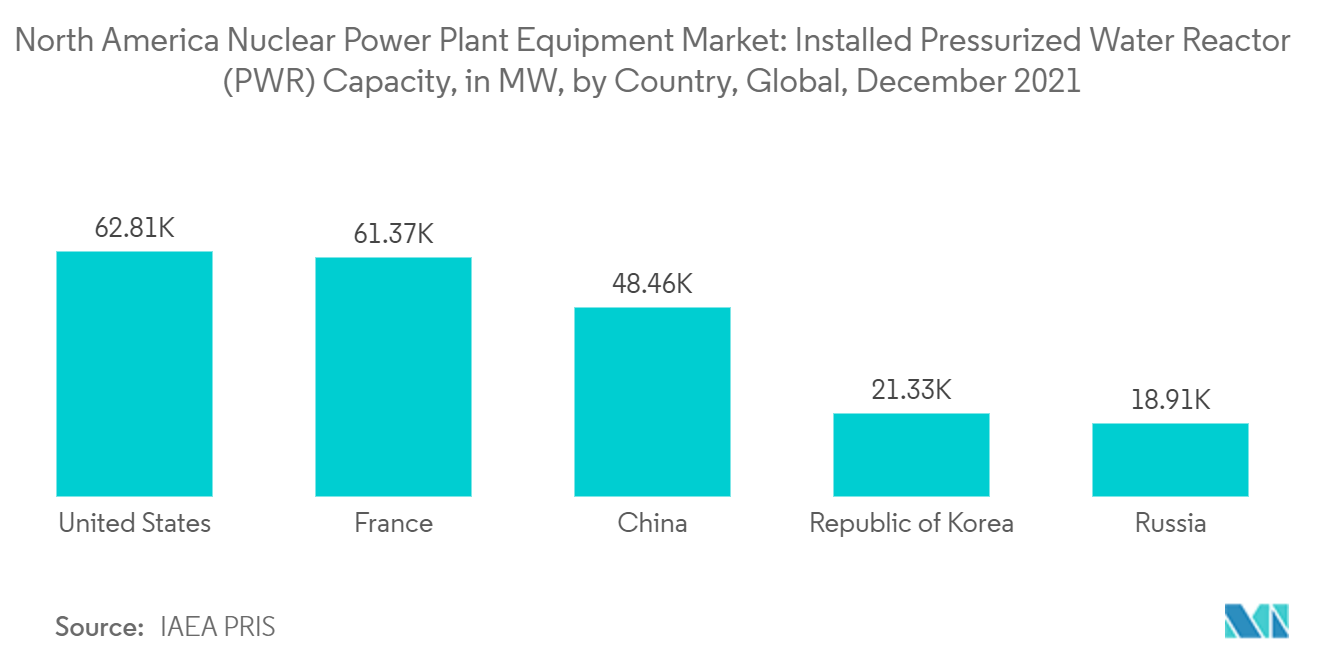Market Trends of North America Nuclear Power Plant Equipment Industry
This section covers the major market trends shaping the North America Nuclear Power Plant Equipment Market according to our research experts:
Pressurized Water Reactors to Dominate the Market
- A typical commercial pressurized water reactor (PWR) design is such that the core inside the reactor vessel creates heat. The core of the reactor pressure vessel (RPV) contains nuclear fuel, moderator, control rods, and coolant that is cooled and moderated by high-pressure liquid water. PWR consists of a reactor vessel, steam generators, reactor coolant pumps, control roads, a pressurizer, and other elements.
- Canada's Darlington and Bruce nuclear units in Ontario are undergoing a multi-year, multi-million-dollar refurbishment, which will allow the nuclear plants to operate well beyond mid-century. The Darlington refurbishment project is expected to be completed by 2026, and the Bruce project by 2033.
- The United States is one of the largest markets for nuclear energy and PWR reactors. According to the World Nuclear Organization, as of November 2021, out of the 93 operational reactors in the country, 62 are PWR reactors, accounting for nearly 65.7% of the total installed nuclear capacity in the country.
- Additionally, the only two units under construction in the United States, the Vogtle 3 and 4 nuclear reactors with a gross installed capacity of 2500 MW, will be using Westinghouse AP1000 PWRs. In the future also, with additionally planned five PWRs, significant growth in the market of nuclear equipment is expected.
- With advantages like low operating costs and less fissile material in the core reactor, the pressurized water reactors are expected to dominate the market during the forecast period.

The United States to Dominate the Market
- Despite a halt in the construction of new nuclear power plants for more than 30 years, the country's reliance on nuclear power has grown. Average nuclear generation costs came down from USD 42/MWh in 2012 to USD 30/MWh in 2019.
- The United States Nuclear Regulatory Commission (NRC), in 2017, approved 20-year license extensions for more than 75% of the fleet, enabling the operation for 60 years. Furthermore, the operators are planning to apply for a further 20-year extension in the lifecycle, allowing the total life cycle of a plant to be 80 years.
- As of December 2021, the country has 93 operating nuclear power reactors with a combined capacity of 95.52 GWe, generating 819 TWh of electricity. As demand for clean energy grows and new reactors are constructed, the amount of nuclear energy generation is expected to grow significantly, which is expected to drive the demand for island equipment during the forecast period.
- Factors, such as declining nuclear power generation costs, upcoming projects, coupled with supportive government initiatives and programs, such as Regional Greenhouse Gas Initiative, State initiatives, and zero-emission credits, are expected to drive the market during the forecast period.


